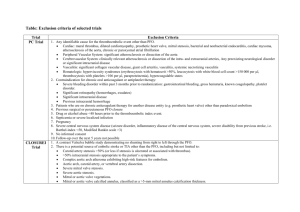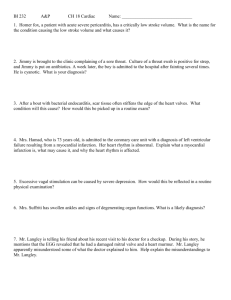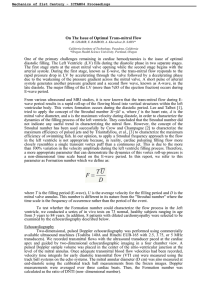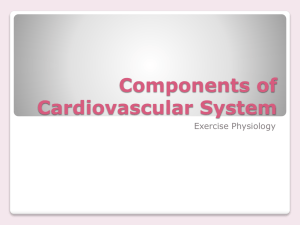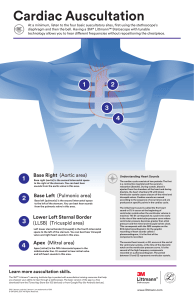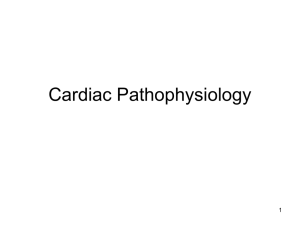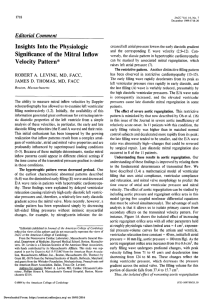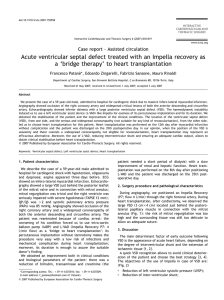a lumped-parameter model of mitral valve blood
advertisement
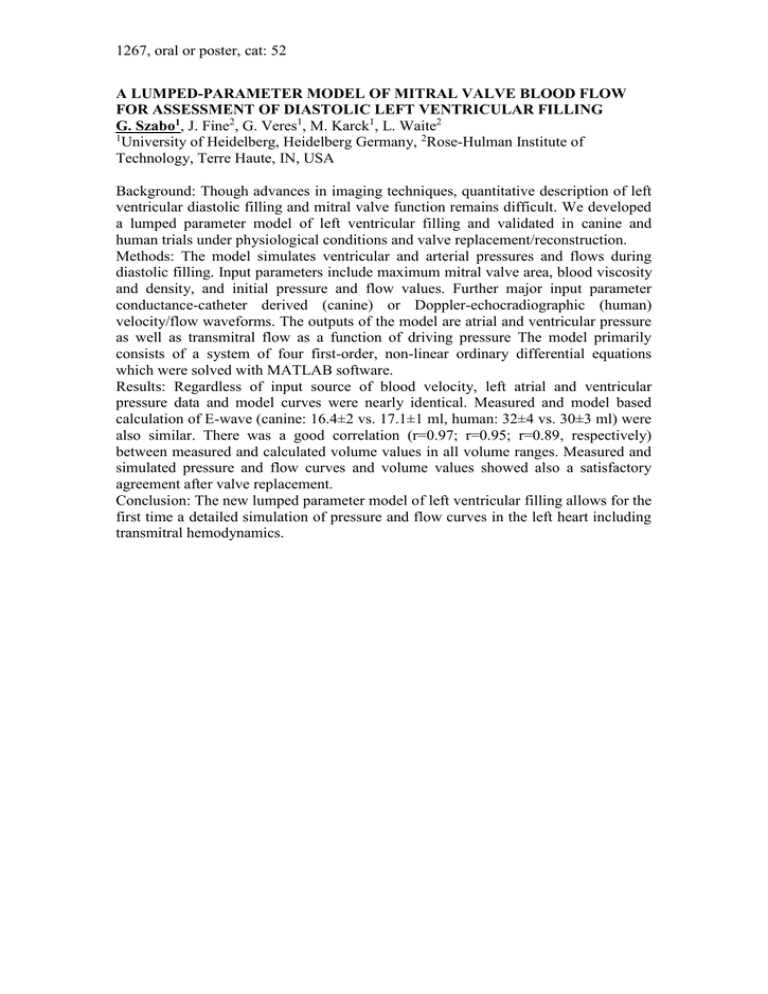
1267, oral or poster, cat: 52 A LUMPED-PARAMETER MODEL OF MITRAL VALVE BLOOD FLOW FOR ASSESSMENT OF DIASTOLIC LEFT VENTRICULAR FILLING G. Szabo1, J. Fine2, G. Veres1, M. Karck1, L. Waite2 1 University of Heidelberg, Heidelberg Germany, 2Rose-Hulman Institute of Technology, Terre Haute, IN, USA Background: Though advances in imaging techniques, quantitative description of left ventricular diastolic filling and mitral valve function remains difficult. We developed a lumped parameter model of left ventricular filling and validated in canine and human trials under physiological conditions and valve replacement/reconstruction. Methods: The model simulates ventricular and arterial pressures and flows during diastolic filling. Input parameters include maximum mitral valve area, blood viscosity and density, and initial pressure and flow values. Further major input parameter conductance-catheter derived (canine) or Doppler-echocradiographic (human) velocity/flow waveforms. The outputs of the model are atrial and ventricular pressure as well as transmitral flow as a function of driving pressure The model primarily consists of a system of four first-order, non-linear ordinary differential equations which were solved with MATLAB software. Results: Regardless of input source of blood velocity, left atrial and ventricular pressure data and model curves were nearly identical. Measured and model based calculation of E-wave (canine: 16.4±2 vs. 17.1±1 ml, human: 32±4 vs. 30±3 ml) were also similar. There was a good correlation (r=0.97; r=0.95; r=0.89, respectively) between measured and calculated volume values in all volume ranges. Measured and simulated pressure and flow curves and volume values showed also a satisfactory agreement after valve replacement. Conclusion: The new lumped parameter model of left ventricular filling allows for the first time a detailed simulation of pressure and flow curves in the left heart including transmitral hemodynamics.


